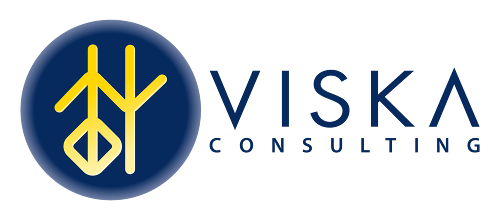In the fast-paced and often complex world of business, the Entrepreneurial Operating System (EOS) has emerged as a beacon of clarity and efficiency. At its core, EOS revolves around harnessing the unique strengths of two pivotal roles: the Visionary and the Integrator. For small and medium-sized businesses, where every decision can significantly impact the trajectory of success, understanding and leveraging this dynamic duo becomes not just beneficial but essential.
Imagine a business as a ship on the high seas. The Visionary is the captain, eyes set on the horizon, dreaming of new lands and adventures. They are the big-picture thinkers, the dreamers who ignite passion and drive innovation. Yet, a ship cannot reach new shores based on vision alone. This is where the Integrator steps in – the seasoned navigator, charting the course, steering the ship through storms, and turning the captain’s vision into a tangible reality.
This article aims to unravel the symbiotic relationship between these two roles within the EOS framework. It’s a guide for business owners, founders, and CEOs who seek to understand how this partnership can be the wind in their sails, propelling their businesses towards uncharted territories of success and growth.
Understanding EOS
The Entrepreneurial Operating System (EOS) is more than just a set of principles; it’s a philosophy, a way of life for businesses that aspire to operate with greater vision, traction, and health. Developed by Gino Wickman, EOS is a holistic business model that integrates simple tools and a proven process to produce powerful results. At its heart, EOS helps leaders and entrepreneurs get what they want from their businesses by providing a clear structure and guidance.
EOS operates on the premise that every component of a business can be categorized and optimized into six key areas: Vision, People, Data, Issues, Process, and Traction. By addressing and balancing these six components, EOS seeks to help businesses gain clarity on their vision, instill discipline and accountability throughout the organization, and foster a healthy, cohesive leadership team.
For small to medium-sized business owners, EOS presents a clear path to eliminating common frustrations, controlling business chaos, and building a solid foundation for growth. It’s about understanding the value of simplicity and focus and how these elements can transform the way a business operates. EOS isn’t just about achieving short-term gains; it’s about building a legacy, a business that thrives on its values, vision, and the collective energy of its people.
As we delve deeper into the EOS framework, the Visionary and the Integrator roles stand out as the twin engines driving this system. Their relationship is the heartbeat of EOS, a fascinating interplay of dream and reality, strategy and execution. In the following sections, we’ll explore these roles in detail, understanding their significance, how they complement each other, and why their synergy is crucial for any business aspiring to scale new heights.
The Visionary
In the tapestry of business, the Visionary is the artist, painting broad strokes of ideas and possibilities. Visionaries are the entrepreneurs, the founders, and the CEOs who can look beyond the horizon of the current business landscape. They are the dream weavers – crafting visions of what could be, sparking innovation, and driving the business forward with their enthusiasm and creativity.
A Visionary is typically charismatic and highly imaginative. They are adept at big-picture thinking, often coming up with groundbreaking ideas and strategies that can revolutionize the business. This doesn’t just include new products or services but also visionary approaches to marketing, company culture, and customer engagement. Their strength lies in seeing opportunities where others see challenges and making connections that others might miss.
However, Visionaries often struggle with the nitty-gritty details of day-to-day operations. Their minds are always looking ahead, which can sometimes lead to a disconnect with the present operational needs of the business. This is where the role of the Integrator becomes critical. But before we delve into that dynamic, let’s understand the essence of a Visionary a bit more.
In a small to medium-sized business, a Visionary is often the driving force behind the company’s culture and values. They are the ones who inspire and motivate and cultivate a sense of purpose and direction. Employees tend to look up to Visionaries, drawn by their passion and vision for the future. However, this charisma and forward-thinking mindset need to be balanced and grounded, which is where the Integrator comes in.
The Integrator
If the Visionary is the dreamer, the Integrator is the doer. The Integrator takes the Visionary’s ideas and visions into actionable, tangible plans. They are the ones who bring structure to the chaos and align the various parts of the business to work seamlessly toward a common goal. The Integrator is the glue that holds the organization together in many ways.
An Integrator is a pragmatic leader who excels in execution. They are often detail-oriented and process-driven and are excellent at managing people and resources. Integrators are skilled in translating high-level ideas into concrete steps and ensuring that these steps are followed through. They are the ones ensuring that the business’s day-to-day operations align with the long-term strategic vision.
In smaller businesses, the role of an Integrator is crucial. They often counterbalance to the Visionary, bringing a sense of realism and practicality. While the Visionary looks at ‘what can be,’ the Integrator focuses on ‘what needs to be done.’ This role requires a deep understanding of business operations, exceptional organizational skills, and the ability to manage and lead teams effectively.
The relationship between a Visionary and an Integrator is akin to a dance – one leads with ideas and passion, while the other follows with structure and action. However, it’s essential to note that this isn’t a hierarchy but a partnership. Each role complements the other, creating a balance crucial for the business’s success. In the next section, we will explore this synergy in-depth, understanding how these two roles work together and the impact they have on a business.
Synergy Between Visionary and Integrator
The relationship between a Visionary and an Integrator can be likened to a perfectly tuned orchestra, where the Visionary is the composer and the Integrator is the conductor. Each plays a vital role, and when they synchronize, the result is a harmonious blend of creativity and practicality that propels a business forward.
This synergy is built on a foundation of mutual respect and understanding. The Visionary respects the Integrator’s ability to organize, systematize, and run the business efficiently, while the Integrator values the Visionary’s creativity, foresight, and ability to see opportunities. When these roles align, they create a dynamic force that can overcome business challenges and drive growth.
However, achieving this synergy is not without its challenges. With their fast-paced ideas and ever-changing goals, visionaries can sometimes overwhelm or frustrate Integrators, who thrive on consistency and systematic processes. Conversely, Integrators, in their quest for order and efficiency, may inadvertently stifle the Visionary’s creativity. Effective communication and a clear division of responsibilities are key to maintaining a healthy balance. Regular meetings and open dialogues where both parties can express their views and concerns are crucial.
The power of this partnership is most evident in decision-making. The Visionary brings innovative ideas and external perspectives, while the Integrator provides insights into the operational feasibility and impact on the team. Together, they can make decisions that are both visionary and practical.
The Role of a Fractional COO/Integrator in SMEs
In many small to medium-sized enterprises (SMEs), having a full-time Integrator may not be feasible due to budget constraints or the size of the business. This is where the concept of a fractional COO/Integrator becomes invaluable.
A fractional COO/Integrator offers the expertise and skills of a seasoned Integrator but on a part-time or contractual basis. This arrangement can be particularly beneficial for SMEs that need strategic, operational leadership but are not yet ready or able to afford a full-time executive position.
The fractional COO/Integrator brings several benefits:
- Cost-Effectiveness: It allows businesses to leverage the expertise of an experienced executive without the full-time salary commitment.
- Flexibility: Businesses can scale the fractional COO/Integrator’s involvement up or down based on the company’s current needs and growth phase.
- Expertise: Fractional COOs often have a wealth of experience across various industries and can bring fresh perspectives and proven strategies to the business.
When considering a fractional COO/Integrator, SMEs should evaluate their specific needs and ensure that the individual’s expertise aligns with their strategic goals. It’s also important to establish clear communication channels and define the scope of work and expectations from the outset.
Incorporating a fractional COO/Integrator into the business structure can be a game-changer for SMEs. It provides an Integrator’s leadership and operational excellence, ensuring that the Visionary’s ideas are executed effectively, thereby driving the business toward greater success.
Best Practices for a Strong Visionary-Integrator Relationship
The success of the Visionary-Integrator partnership hinges on more than understanding each other’s roles. Cultivating a relationship based on trust, communication, and mutual respect requires a conscious effort. Here are some best practices to foster a strong partnership:
- Clear Communication: Regular and transparent communication is the cornerstone of this partnership. Establishing a routine for check-ins and updates helps align goals and promptly address issues.
- Defined Boundaries: Clearly defining the roles and responsibilities of each partner avoids confusion and overlap, allowing each to play to their strengths.
- Conflict Resolution: Conflict is inevitable in any partnership. The key is to address it constructively, focusing on solutions rather than personal differences.
- Shared Vision and Goals: Regularly revisiting and aligning on the company’s vision and goals ensures that both the Visionary and Integrator are working towards a common objective.
- Mutual Respect and Trust: Building a foundation of respect and trust enables each partner to value and rely on the other’s expertise and decisions.
By implementing these practices, the Visionary and Integrator can create a synergistic relationship that not only benefits their working dynamics but also significantly contributes to the overall health and success of the business.
Conclusion
The Entrepreneurial Operating System (EOS) opens a realm of possibilities for small to medium-sized businesses, and at the heart of this system lies the powerful partnership between the Visionary and the Integrator. This duo is fundamental to driving business growth, overcoming operational challenges, and achieving long-term success. The addition of a fractional COO/Integrator can further enhance this dynamic, providing flexibility and expertise tailored to the business’s specific needs.
As business owners, founders, and CEOs, understanding and nurturing this relationship is not just a strategy; it’s an investment in the future of your business. It’s about creating a balance between visionary aspirations and pragmatic execution. In the bustling and ever-evolving world of business, this balance is the key to building a resilient, adaptable, and successful enterprise.
Are you ready to harness the full potential of your business?
Take a moment to reflect on your current organizational structure. Do you have a clear Visionary and Integrator dynamic in place? If not, consider how you can establish or strengthen this partnership. For businesses operating on a smaller scale or with budget constraints, explore the possibility of a fractional COO/Integrator. Remember, the right partnership can be the catalyst for extraordinary growth and success. Embrace the EOS framework and embark on a journey to elevate your business to new heights.

